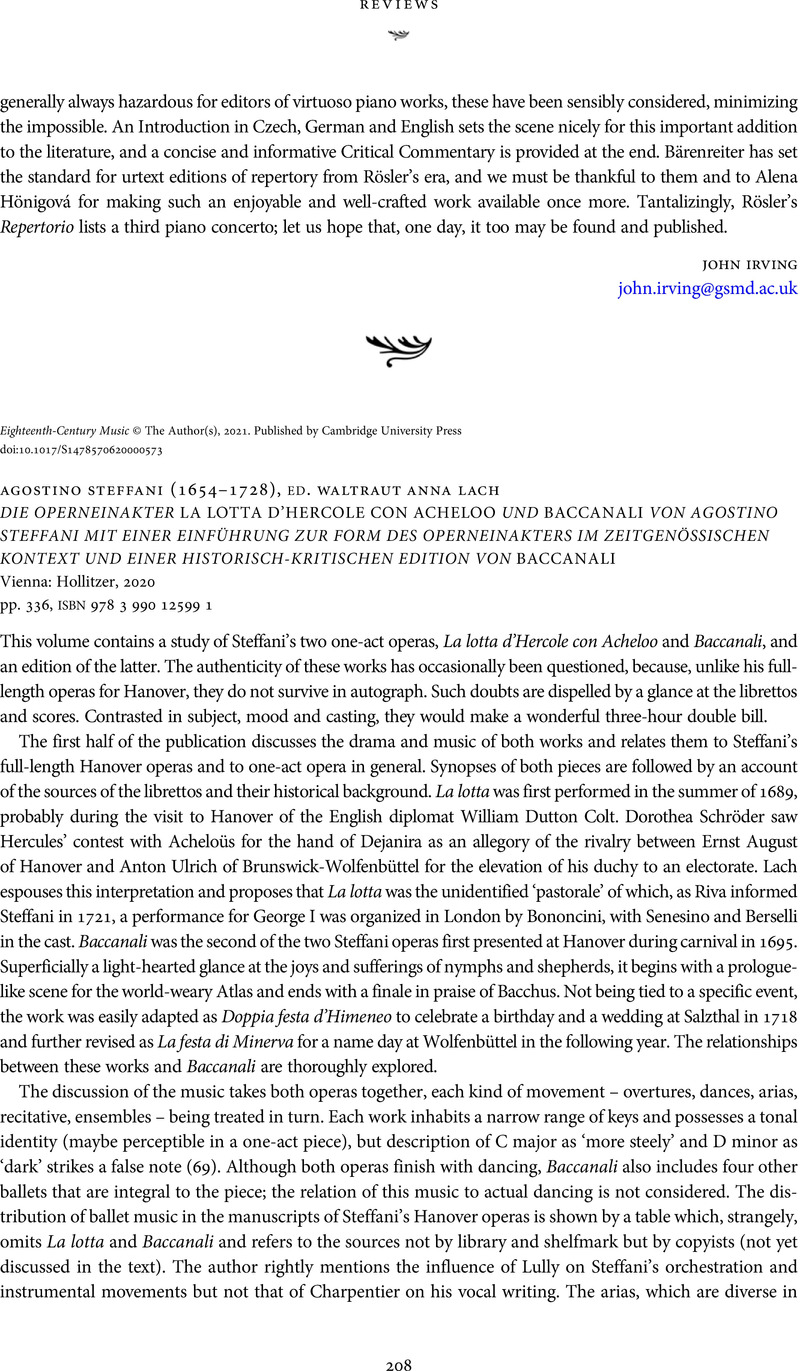No CrossRef data available.
Article contents
AGOSTINO STEFFANI (1654–1728), ED. WALTRAUT ANNA LACH DIE OPERNEINAKTER LA LOTTA D'HERCOLE CON ACHELOO UND BACCANALI VON AGOSTINO STEFFANI MIT EINER EINFÜHRUNG ZUR FORM DES OPERNEINAKTERS IM ZEITGENÖSSISCHEN KONTEXT UND EINER HISTORISCH-KRITISCHEN EDITION VON BACCANALI Vienna: Hollitzer, 2020 pp. 336, isbn 978 3 990 12599 1
Published online by Cambridge University Press: 05 February 2021
Abstract
An abstract is not available for this content so a preview has been provided. Please use the Get access link above for information on how to access this content.

- Type
- Review: Edition
- Information
- Copyright
- Copyright © The Author(s), 2021. Published by Cambridge University Press



